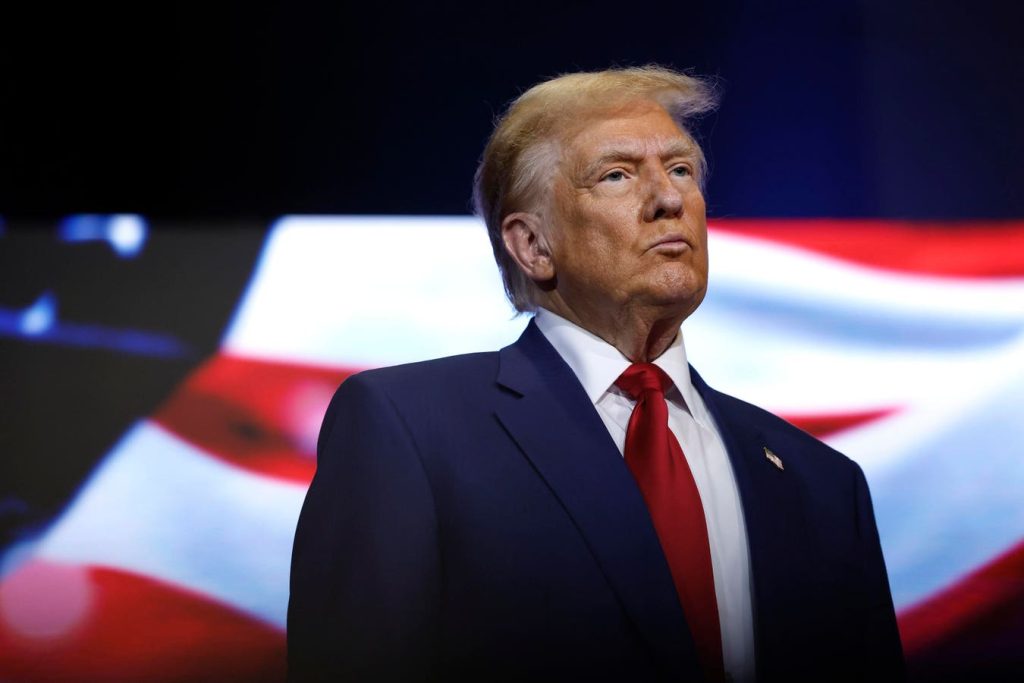The potential Trump DOGE Dividend Check raises a critical eligibility question: Who would receive … [+]
Elon Musk’s recent consideration of a $5,000 DOGE Dividend check and Trump’s support the following day have sparked interest as well as debate over its feasibility. While such a payment could significantly boost American households, distributing large-scale financial aid comes with a hefty price tag.
Critics of a DOGE Dividend check have argued that it would add inflationary pressure and compete with other administration tax priorities. Many are also skeptical of Musk’s goal to find $2 trillion in actual savings. Even Musk has backtracked from the $2 trillion figure, saying in January that it was a “best-case scenario” and that there was only a “good shot” at cutting $1 trillion, according to NBC News. However, Trump may be keen to send out a DOGE check, given that previous stimulus checks were politically popular and that he could use them as another branding opportunity.
The potential Trump DOGE Dividend check raises a critical eligibility question: Who would receive it? The answer may not be politically palatable or even viable.
Who Could Get A Trump DOGE Dividend Check And Why? The Initial Proposal
The case for a DOGE Dividend check, first proposed by DOGE adviser James Fishback on X, suggests allocating 20% of DOGE’s projected savings and distributing it exclusively to taxpayers. His use of the word “taxpayers” is deliberate. Fishback elaborated on this design choice in his proposal, arguing that it would incentivize labor force participation by “requiring individuals to be net payers of federal income tax to be eligible to receive their DOGE Dividend check.”
Moreover, Fishback claims sending DOGE Dividend checks would not be inflationary because they would be “sent only to tax-paying households, who have a demonstrated propensity to save (not spend) the incremental dollar received.” He elaborated: “Tax-paying households are more likely to save (not spend) a transfer payment like the DOGE Dividend as consumption is a lower share of their income. There is nothing inflationary about paying off debt, saving for emergencies, or investing in college or retirement. In fact, debt paydowns are actually deflationary.”
Why The DOGE Dividend Check Eligibility Requirement May Create A Headache For Trump
The fundamental problem with Fishback’s approach is that it would disproportionately benefit higher earners while excluding millions of low-income Americans. In 2023, 99.9% of households with income under $10,000 did not pay any federal income tax, according to the Tax Policy Center. Among households earning between $10,000 and $20,000, 93.1% paid no federal income tax. Even among those earning $40,000 to $50,000, nearly half paid no federal income taxes. Meanwhile, every household earning above $1 million paid taxes, as did 99.6% of those earning between $500,000 and $1 million.
Limiting a Trump DOGE Dividend check to taxpayers would exclude a large swath of lower-income … [+]
The proposed eligibility criteria would result in billionaires like Jeff Bezos and Bill Gates receiving a DOGE Dividend check. In contrast, millions of working-class Americans—many of whom were prioritized in previous stimulus programs—would receive nothing. This contradicts the precedent set by prior direct payments, such as the Covid-19 stimulus checks, which were heavily weighted toward lower-income Americans and could create a political quagmire for Trump.
The Tension Of Who Should Receive DOGE Dividend Checks
There’s inherent tension in Fishback’s DOGE Dividend check proposal: Sending checks to higher earners who are more likely to save the money would achieve specific goals, including avoiding inflationary pressure. However, would Trump really avoid sending checks to tens of millions of lower earners, including many who voted for him?
The Covid-era stimulus payments were designed with financial relief in mind, targeting individuals making under $75,000 and phasing out for higher incomes. By contrast, the DOGE Dividend proposal in its current form would flip this logic on its head—deliberately steering money away from lower-income Americans on the assumption that wealthier recipients would be less likely to increase spending and thus avoid inflationary pressures. This is a stark departure from past direct payment programs and could create political challenges, as it would likely face significant backlash for excluding many of the Americans who have historically benefited from stimulus measures.
The Upshot Of DOGE Dividend Checks Eligibility: A Policy Paradox With No Easy Answer
The Trump DOGE Dividend check idea is shaping up to be a policy paradox. The program would need to exclude lower earners to prevent inflation, but doing so would create significant equity concerns. Expanding eligibility could stoke inflationary pressures, undermining one of the program’s central arguments. It would also mean each eligible household would receive a smaller check than the $5,000 DOGE Dividend check Fishback calculated.
